|
Written by Darren Bansil Asian Americans constantly face and deal with racial misconceptions in America due to the
stereotypes made against them. Although these stereotypes can seem flattering, they tend to do more damage than good in most cases. But that’s a topic for another day. Stereotypes regarding Asians in America are shown to hold back Asian Americans in the workplace. Discriminations made against Asians cause them to feel separate, disconnected from the rest of their peers and coworkers. A survey of 350 Asian Americans conducted by Jason Shen, reports that a third stated feeling that “they are treated worse than white people” and eighty-eight percent reported facing a racial stereotype. Due to the model minority myth in America, many Americans simply don’t see Asians as a struggling race in America. Most of the time, white peers assume that Asians are less dominant, leading to bullying or discrimination in the workplace. This is combined with many negative stereotypes including making fun of Asians for having small penises. A study conducted by Jennifer Berdahl reports that East Asians who are dominant are racially harassed at work more than nondominant East Asians. So even if Asian Americans are dominant and fight back against these discriminatory behaviors, they face more severe harassment. Another study by Berdahl also reports that coworkers dislike a dominant Asian coworker compared to a nondominant Asian coworker and dominant or nondominant workers of any other race. This study lines up with the story of Stella who says that she gets treated courteously when she acts as the “deferential, quiet and nice Asian woman” but gets hostile reactions from speaking up, or strong disagreements and conflicting opinions. This is what is preventing Asians from obtaining higher, managerial positions in the workplace. According to the Pew Research Center, Asian Americans are the highest-income, best-educated racial group in the US; however, they sadly remain underrepresented in executive positions in companies. Sources: https://www.forbes.com/sites/liyanchen/2016/01/20/how-asian-americans-can-break-through- the-bamboo-ceiling/?sh=6422c0d21e43 https://www.forbes.com/sites/andiekramer/2020/01/22/why-asian-american-women-arent- advancing-into-senior-leadership-positions/?sh=4d60a8b973d2 https://psycnet.apa.org/record/2012-09819-004 https://www.fastcompany.com/40590269/asian-americans-on-being-likable-in-the-modern- workplace
0 Comments
Written by Jerry He Historically, Asian-Americans have been seen as apolitical, politically inactive. This partially derives from “model minority” stereotypes which paint the Asian-American community as passive, quiet and submissive. These notions, however, are increasingly being challenged in recent years. With the election of Kamala Harris, an Asian-American, to the office of Vice-President, as well as the rise of Asian-American activists in response to racial hate-crimes stemming from the coronavirus, Asian-American role in politics and government has taken the national spotlight. The term "Asian American" The term “Asian-American” used today can be dated back to 1968. It was created by activist and historian Yuji Ichioka to help unite various Asian ethnic groups to form a new united political and social block to advocate against common racial and social discrimination. Prior to this, various Asian groups in the USA were fractured politically and socially. These divided groups held significantly smaller social and political leverage and as a result, were easier to discriminate against. For example, during the Chinese Exclusion act, non-Chinese Asian groups did little to protest or object against the law. Furthermore, during World War II, when Japanese internment camps were created, Chinese and Korean Americans made an effort to distance themselves from the Japanese. It wasn’t until the Civil Rights Era of the 1960s, when the term “Asian-American” was coined, that these groups began to unite in a common effort to increase political participation and advocate against racial and social injustice/discrimination. Asian Americans calling for peace and an end to the Vietnam War in the streets of Los Angeles Little Tokyo, Jan 17, 1970 The Killing of Vincent Chin Another turning point in the political history of Asian-American was the killing of Vincent Chin. Vincent Chin, who was a Chinese American, was murdered after being mistaken for being Japanese, during a time where competition with Japanese manufacturers resulted in mass layoffs of auto workers in Detroit. The murder was largely seen as a hate crime and served as a rallying cry for Asian Americans of different backgrounds. Large groups of Asian-Americans organized and protested the killing, calling for justice. A group of Asian-Americans protest the killing of Vincent Chin Resurgence of the Asian-American movement The year 2020 brought a whole new set of issues for the Asian-American community. With the advent of the Coronavirus, Asian-Americans have been the victim of a dramatic increase in hate crimes and racism. The year 2020 alone has seen an almost 150% increase over previous years. This has spurred large groups of Asian-Americans to organize against these hate crimes. Coalitions of social justice groups like Stop AAPI Hate have formed in order to address these issues. Large scale social media efforts have also sought to inform and advocate against these hate crimes. Asian-Americans protest racism and discrimination in San Francisco, 2020 In addition to this, recent years have seen an increasing amount of Asian Americans participating in politics and government. Currently at the national level, there are 16 Asian Americans representing constituents in the House, and 2 in the Senate. Furthermore, being one the fastest growing ethnic groups in the USA, Asian-Americans represent an increasingly important electorate. Numerous groups such as APIA Vote, formed in 2007, have increased efforts in recent years to mobilize Asian-Americans in electoral and civic participation.
Written by Ibrahim Itani and Serina Kaochari Over the previous year, fueled by the ongoing pandemic-there has been a spark in the number of Asian American hate crimes. With a 150% increase in 2020, there have been a recorded over 2,800 incidents of violent acts committed against Asian Americans since the start of the pandemic. These incidents fuel a mass wave of anti-Asian hate, and create a sense of fear between many.
During late January, an 84-year-old Thai immigrant, named Vicha Ratanapakdee was a victim of the violent attacks against Asian Americans. He was on his usual morning walk, just after having said goodbye to his wife, he was violently slammed to the ground by a 19-year-old man. Ratanapakdee's family say the attack was more than an example of someone preying on the vulnerable and elderly. They called it a hate crime. This fatal attack caused a brain hemorrhage, leading to his death a mere two days later. Not only this incident, but many others have occurred and have been brought to light after the initial violent attack. Days later, a 91-year-old Asian man was violently shoved to the ground in Oakland's Chinatown. A month after, a 64-year-old woman was robbed outside a Vietnamese market in San Jose, California. And just recently, a 61-year-old Filipino man was slashed in the face on the New York City subway. Examining normalized Asian racism in American society is vital in truly understanding the Asian American experience and the reason why so many hate crimes have occurred lately. The model minority stereotype is the idea that all Asians are polite and educated which would mean Asian Americans are better off economically and socially. This dangerous and ignorant narrative is used to dismiss the problems Asian Americans face, while consequently setting unhealthy, high standards for Asian Americans to conform to. Though studies show that Asian Americans experience similar rates of depression and anxiety as other racial groups, they’re three times less likely to seek mental health services because of the pressure society puts on Asian Americans to always maintain a ‘perfect’ and ‘humble’ demeanor. Even so, a far more blatant and apparent form of normalized racism is that brought about by the societal glorification of Eurocentric beauty standards. More often than not Asian Americans are mocked and insulted for their skin tone or facial features, so much so that many people dismiss these hurtful comments as jokes. In a recent event a Sacramento teacher was caught on recording doing ‘slant eye’ in which she described her gestures as ways to identify Chinese, Japanese, and other Asian ethnicities. That video may seem shocking to people who aren’t familiar with the Asian American experience but to many Asian Americans across the country it’s an issue faced everyday. Asians have been the scapegoat for the COVID-19 pandemic and its consequences, this very villainization has highlighted the discrimination and racism Asian Americans have had to endure even prior to the pandemic. In many instances Asian culture and the Asian American experience isn’t taken seriously and the contributions Asian Americans make to society are taken for granted. To educate and to advocate is the greatest way to make a difference in the fight against anti-Asian rhetoric. Sharing the Asian American experience with others and outlining the hardships that go hidden in the lives of Asian Americans can make an impactful contribution in helping others realize the severity of this conflict. Change comes from the bottom up, and as more people continue to come together in the fight against racism real strides are being made for a better future. As this process goes on the rest of society must start by doing the obvious, acknowledging the rampant racism that goes on in the lives of Asian Americans. Sources: https://www.nydailynews.com/news/national/ny-sacramento-teacher-slit-eyes-anti-asian-racism-20210228-2ezilbnvhjdsdjeahcni336pom-story.html https://www.usatoday.com/story/news/2020/12/17/covid-19-era-shows-normalization-racism-against-asians/6515353002/ https://www.nytimes.com/2021/02/27/us/asian-american-hate-crimes.html https://www.voanews.com/usa/race-america/hate-crimes-targeting-asian-americans-spiked-150-major-us-cities Written by Hillary Quach Asian icons can be seen in movies, tv shows, and books. Yet, Wong Fu Productions showed a different pathway to fame through video making. The video sharing website known as YouTube, was the starting point for these boys.
Wong Fu Productions was founded by Wesley Chan, Ted Fu, and Philip Wang, where they initially used their own website to post videos, before transitioning to YouTube. They actually met at the University of California, San Diego with no plans of pursuing filmmaking. Short films are featured on their YouTube channel, with mostly Asian American casts. As seen in mainstream media, there is a lack of Asian representation, so Wong Fu decided to fill that gap. They do this with the purpose of demonstrating that people can relate to their content without being of Asian descent. Their Youtube channel also became a home for Asian American artists, like Far East Movement, which became the first Asian-American group to top the Billboard Hot 100 chart. In 2011, Wong Fu Productions reached 1 million subscribers and they currently have over 3 million subscribers on their YouTube channel. YouTube has become such a large platform and Wong Fu Productions is aware of this, “The culture has changed and we weren’t part of that, but I’m glad because we stayed focused to use it as a platform to tell our stories.” Wong Fu Productions is one of the most original icons in the filmmaking industry and continues to inspire others. They broke the standard for Asian representation in mainstream media, leading the way for many others to follow. Written by Meira Lee and Allison Lunandy Shougatsu (Japanese New Year) Shougatsu is an annual tradition made by the Japanese to celebrate the end of the year. It is not a one-day celebration like most New Year traditions, Shougatsu is celebrated for three days, starting from December 31st to January 2nd. This holiday is one of the most important events in Japan; all schools, businesses, and establishments are closed for all of Shougatsu. Families and friends gather to celebrate and children are gifted Otoshidama (envelopes of money). On the first two days of Shougatsu, the people follow the Hatsumoude tradition of going to a local temple or shrine to pray for a prosperous new year. On the final day of Shougatsu, the Japanese emperor gives a speech, then allowing the public into the imperial palace. Lunar New Year Lunar New Year, also known as Chinese New Year, is a holiday not only celebrated in China but all over Asia. This holiday is celebrated on the Lunar calendar’s first moon day. This year, Lunar New Year is on February 12th, 2021. There are many traditions celebrated differently throughout the continent, however, some common traditions are family gatherings, giving red envelopes, fireworks, and praying. Food is an important part of Asian New Year tradition, and certain kinds of food can represent positive values for the new year. For example, fish represents abundance, sticky rice cakes represent family unity and long noodles represent a smooth year. According to the Chinese Zodiac Calendar, this upcoming year is the Year of the Ox! Those born in the years 1949, 1961, 1973, 1985, 1997, 2009, and 2021, are a part of the Year of the Ox. Christmas Christmas is a holiday celebrated all over globe, even in Asia! This holiday is celebrated every year on December 25th. Asia is home to a great diversity of cultures, including religions such as Buddhism, Christianity, Confucianism, Hinduism, Islam, Judaism, Shinto, Sikhism, and Taoism. However, this doesn’t stop Christmas to be celebrated all throughout Asia. For example in the Philippines, Christmas is celebrated from the 16th of December all through the first Sunday in January. Philipinos also usually go to early masses before Chrimsas called, “Misa de Gallo” or “Simbang Gabi”. A Christmas tradition in the Philippines is the making of a “parol” which is a Christmas star made out of bamboo strips and colored Japanese paper, which represents the star that guided the Three Wise Men. In Japan, there is a tradition to eat KFC on Christmas day. It was inspired by the tradition of eating turkey on Thanksgiving in the west. KFC’s Christmas slogan in japan is, “kurisumasu ni wa kentakkii!” which means, “Kentucky for Christmas!” Thaipusam Thaipusam is a temple festival celebrated by Hindus of Tamil descent all over Southeast Asia and India. This festival takes place on the night of the full moon in the 10th month in the Hindu calendar, which usually falls in either January or February. Thaipusam celebrates Lord Murugan, who is the Tamil god of war. Devotees of this festival and Lord Murugan celebrate Thaipusam by piercing themselves with swords or hooks, while also carrying kavadis. In Kuala Lumpur, Malaysia, many celebrators of Thaipusam watch as skewered devotees walk and climb up 272 steps in the Batu Caves to show their dedication and devotion to Lord Murugan. Sources:
https://www.britannica.com/topic/Lunar-New-Year https://www.tripsavvy.com/winter-festivals-in-asia-1458368 https://theculturetrip.com/asia/japan/articles/why-does-japan-eat-kfc-at-christmas/ https://www.whychristmas.com/cultures/philippines.shtml Written by Kevin Nguyen and Minhanh Nguyen During his speech for the student Republican group, Turning Point Action, Trump refers to the novel coronavirus as “kung flu,” while going on to say “some people call it the Chinese flu, the China flu, they call it the China.” The racist name for the Wuhan-originated virus, which has killed over 200,000 Americans, received elicited laughter and wild cheers from the young crowd. Since the pandemic began, thousands of Asians in the United State have become targets of harassment and assault. A poll found that three in 10 Americans blamed China or Chinese people for the virus. This harkens back to decades of state-sanctioned discrimination, such as when Japanese Americans were forced to relocate and be incarcerated in concentration camps during World War II. Recently, Danny Satow was walking home one day, when a heavy object slammed into her chest. A car drove past and a voice yelled a racial slur against Chinese people. Although it stung, she kept walking, but she broke into tears before she got to the end of the street. Human beings are social creatures; we, as a whole, have a constant desire for affection, acknowledgement, and a sense of belonging. Often, we face the conscious decision of whether to continue being an outcast or try to feel accepted by society and people around them by changing the qualities that set us apart. Ostracism, exclusion from a society or group, on Asian-Americans has and will threaten individuals’ physical and psychological well-being.
Within the 21st century, the issue of ostracism has grown to become a widely researched topic. Notably, humans are recognized to possess the desire to feel the sense of belonging or an acknowledgement for the things we do and people that we are. As cultural diversity heightens within the ongoing era, it is difficult to say that cultural acceptance has advanced alongside it. Despite the fact that the North American region occupies the largest immigrant population and is often recognized to be a “melting pot,” many of those who hold cultural differences to what may be denoted as the standard, face the feeling of being ostracized. Whether involving police brutality, social slander, or blatant racism, many minorities have experienced hostility as a result of what they represent or who they are. The issue of ostracism has been present for an innumerable period of time, but with the ever changing societal standards and the increased influence of social media, the prevalence of this issue continues to escalate. To say that ostracism has had a very minimal impact on Asian-Americans is an understatement. Everyday, we are constantly faced with racist comments and told that “This isn’t racist.” Even if it was told in a jokingly manner, it still stings to have the stereotype repeated everywhere you go. Studies have shown that ostracized people are less helpful and more aggressive to others, and long-term effects include alienation, depression, helplessness, and feelings of unworthiness. For parents, it is especially hard to shield their kids from this, as it can affect their youth. It is important to include all Asian identities because it is in these times, where the US is in a crisis, that racism reaches its highest point. If you look back in history, most of the major events/conflicts had some connection with racism. The 9-11 attacks by Islamic extremist grips on the Twin Towers in New York led to discrimination against Muslims, even though most aren’t associated with the group. The Chinese Exclusion Act prevented Chinese people from immigrating to the US. The American Civil War was a direct consequence of African slavery and discrimination. Asian-Americans have brought creativity and benefits to the economy, though they are the scapegoat for a virus that has little to no connection to them. Aren’t breaking the ideals of democracy and freedom a price high enough to continue excluding them from society? It is quintessential in this day and age to focalize upon the risks that ostracism poses. Growing up as an Asian-American is as though to have two separate identities, the vying desperation to recognize a source of cultural representation is met empty handed. Trying to find a sense of cultural individuality is often retaliated by those who have fully accepted the “American” way of things. It is on a daily basis that first generation Asian-Americans have to face the reality that the world does not care for them; it is the feeling as though what we do can never be as significant as our counterparts. And especially as a result of this global pandemic, the fear of standing out is more so prominent. The media often broadcasts hate crimes initiated as a result of cultural prejudice; within the past year, cases of stabbings targeting Asian-Americans and varying reports of anti-asian assaults have skyrocketed. These implications have forced the NYPD to considerably recognize the necessity to establish a Asian Hate Crime Task Force. As a result of the global pandemic, many individuals have taken it upon themselves to single out Asians and punish them for a disease that they have no control over; and although people of color are exposed to ostracism, Asians are intensively targeted by essentially all races. The escalating issue of ostracism will only continue to affect the livelihood of a population of people who have already experienced social isolation during the entirety of their presence within the United States. Sources: https://www.dallasnews.com/news/crime/2020/04/01/fbi-says-texas-stabbing-that-targeted-asian-american-family-was-hate-crime-fueled-by-coronavirus-fears/ https://www.researchgate.net/publication/313720602_Culture_Social_Interdependence_and_Ostracism https://www.wsj.com/articles/nypd-forms-asian-hate-crime-task-force-11603040400 https://www.washingtonpost.com/politics/trump-again-uses-kung-flu-to-describe-coronavirus/2020/06/23/0ab5a8d8-b5a9-11ea-aca5-ebb63d27e1ff_story.html https://www.newsbreak.com/news/2052793800394/americas-long-history-of-scapegoating-its-asian-citizens Written by Alvin Abraham When you look at modern day cinema today, it seems that every film that is successful in the United States is a part of Hollywood. Hollywood has undergone some changes since its initial movies in 1910, but over time it has become a staple of western culture and the epicenter of big film production. But elsewhere, on the eastern side of the world, lies a different but similar genre- Bollywood. Bollywood is an Indian film Industry that is based in Mumbai and makes almost exclusively Indian films. At first glance, Bollywood may seem like a rip off of its Western counterpart. But there are some distinct differences in the integration of music, the actors chosen to play the roles of the films, and the target audience of these two worlds.
Bollywood is something that is shown to have a lot of differences in production in comparison to Hollywood films. For example, while typically only musicals have multiple songs playing throughout the movie in Hollywood, The Bollywood Industry has almost every one of its movies have at least 4-5 songs that are played throughout the movie. Similar to musicals, these songs often reflect a key point in the movie, and it could show things like the change of heart a character has in a film. These songs are usually used as a means to integrate the Indian music Industry into Bollywood, as each movie also comes with CD’s with a soundtrack of the movie for a separate purchase. The films produced are also typically 3 hours in length, compared to Hollywood’s 2 hour runtime. This is due to the frequent number of songs and the slower pace that Bollywood movies tend to take. Bollywood also has a particular format in which movies are made for actors. While in Hollywood a film can be successful without A-list actors, Bollywood movies make this act near impossible. This is due to the way that Indians decide on what film they want to watch. While we would typically watch whatever movie has a more interesting plot or story, The film’s audience mainly looks at the actors that are in the film. Almost every successful film in Bollywood has some of the best Indian actors, which include Shah Rukh Khan, Deepika, Aamir Khan, Abhishek Bachan, Salman Khan, Hrithik Roshan, Prianka Chopra, Kareena Kapoor, etc. The main reason the Bollywood film industry is formatted like this is due to the different audience. Bollywood’s main audience is India and South Asia, and they consume cinema a lot different than we do. Hollywood usually has film critics and ratings to say if a film was particularly good, but Bollywood relies a lot more on word of mouth reviews. While the film typically has trailers and there are some sites that have Bollywood ratings, knowing if a film is good in India usually relies on the actors that are in the movie and the previous experience people had watching the movie. This leads to some of the tendencies that Bollywood makes, and it's what helps to separate the Industry from its American counterpart. While the Bollywood film industry looks a little strange and foreign to us, there are some very good movies that have come from the industry. My favorite movie of all time, “3 Idiots”, is a Bollywood movie due to the difference in emotions I felt when watching that movie that I have never felt with other Hollywood films. I greatly recommend watching a Bollywood movie for any avid movie goer, if only to get the different experience. And when you come, be sure to bring some of the popcorn from America, because the ones in India just need a little more butter. Written by Emme Lee Before the days of Crazy Rich Asians and Fresh Off The Boat, Asian representation in film and TV was almost non-existent. Asian Americans did not have the luxury of watching shows like Kim’s Convenience or an entire film series like To All The Boys I’ve Loved Before, where they could see actors and actresses that looked like themselves and represented their cultures in a non-stereotypical way. For this, we must thank the legendary Lucy Liu for paving the way.
Lucy Liu is a Chinese-American actress known for portraying O-Ren Ishii in the Quentin Tarantino film Kill Bill (2003) and Alex Munday in the film series Charlie’s Angels (2000). She was born on December 2nd, 1968 in Jackson Heights, Queens, New York, as the youngest of three children. Liu didn’t always dream of becoming an actress. In fact, she studied Asian Languages and Culture in college. However, when Liu was 19 years old, she was discovered by a casting agent while she was on the subway. Her first gigs were small appearances in films and TV shows, and it would be many years until she got her big break. While she was waiting in line to audition for the musical Miss Saigon, she told the New York Times, “There aren't many Asian roles, and it's very difficult to get your foot in the door.” In 1997, Liu’s career skyrocketed when she was cast as Ling Woo in the TV show Ally Mcbeal (1997-2002). Although the role was a catalyst in Liu's career, it was also a topic of controversy in the Asian American community. Many Asian Americans didn’t know whether to applaud the representation of an outspoken Asian woman or to condemn the character for perpetuating the harmful stereotype of Asian women as exotic “dragon ladies”. Whether the character was a necessary representation of an assertive Asian woman or a stereotypical “dragon lady” is still a topic debated today. After Ally Mcbeal, Liu went on to have many starring roles in movies and even became the first Asian American woman to host the late-night comedy showcase Saturday Night Live (1975-present). “I was a kid and I didn’t have a ticket, so I knew I wasn’t getting in,” comedian Awkwafina recalled about that night. “But I just wanted to be near the building. And I remember how important that episode was for me and how it totally changed what I thought was possible for an Asian American woman.” In 2019, Liu became the second Asian American woman— following Anna Mae Wong, the first Asian American actress— to have a star on the Hollywood Walk of Fame. Because of her, Americans are witnessing an uprising in Asian American actors and comedians. Liu opened the doors for them in film and TV, which therefore allowed Asian American audiences to feel more represented in everyday life. Lucy Liu is truly an Asian American trailblazer and icon. Written by Andrea Sison and Toni Arellano Model Minority
It is a popular belief that Asians are known for being the smartest in the school with amazing work ethics and strong drive for success. One of the leading contributions of the asian stereotype regarding academic excellence is the Model Minority Myth, which states that the minority is perceived to be better than the population average, a basis for outgroups. This common misconception built under high standards and comparison puts Asian American students in a characterized, racial system that society expects them to maintain. The model minority myth came into light when Chinese immigrants were praised for their work efforts under American labor back in the nineteenth century. Following generations felt the pressure to uphold the positive image to erase the racist and inferior mindset many Americans had towards asian communities. Families were forced to learn and conform into a seemingly perfect example of a proper citizen in order to fit in and be accepted into society; attend school, get good grades, learn english, etc. Eventually becoming an ongoing cycle, Asian Americans continue to make sacrifices in order to satisfy the majority’s expectations. Generally, society applies the minority myth to all Asians. A social study at Berkeley High School unpacks this myth by taking varying factors into consideration. Using 6 random carefully selected Asians students of mixed heritage, cultural backgrounds and origin, they could interview and gather statistical data to see how their individual experiences affect their performance in school. Many students believe that Asian kids will have a higher GPA, and looking at a general scale, it does appear that their GPAs are relatively high (the mean ranging in the 3.0s within all grade levels). However, it doesn’t mean that all of them get good grades. Looking at individual students, it’s actually quite common to see them struggling in their classes. Even so, some students will be taking more difficult courses which are harder to achieve a higher grade in, but it’s not something that people think over. Good grades isn’t something that comes easy to Asian American students.Just because they’re Asian, doesn’t mean they’re the smartest who will have an easier time getting into college. In fact, statistics show that they trail behind white male and female students had a higher acceptance rate of getting into University, proving that not all Asians outperform other students of different races. Just like any other kid in school, they have personal problems as well. Many deal with cultural, financial, personal problems that they have to balance along with school, which often can affect their work performance. The minority myth’s problematic nature puts struggling students in a helpless position, especially other students of color. The myth often being used to discredit racial and social struggles, saying that they already benefit enough. Others won’t show much appreciation towards those who put in a lot of work to achieve their success, passing it off as something that should happen anyways. Those who need more academic guidance won’t get the support they need because it’s out of the norm. College Acceptance Rate College most Asian parents’ dream for their child. It is also a goal that most Asian kids have. Since more and more people are having access to better learning conditions and opportunities, the challenge to get into college is getting harder. Pressure on both parents and students are also going up. Students are always working hard in order to create a resumé that they think is worthy of recognition. They also plan on which school they want to go to, their dream college or goal college, and which school could be their safety school. One of the controversial topics about college admissions is that race could play a part in a student’s chance of getting in. For example in public institutions, if an Asian has an ACT score of 35 would have the same chances of admission as a white student with the score of 31.6. In a similar fashion, in a private institution, an Asian student with a SAT score of 1550 would have the same chances of admission as a white student that scores a 1410. Asians have the lowest “advantage” having a -3.4 for ACT scores and -140 for SAT scores. Another pressure is to be a “standout”. In 2015 most UC schools saw a big population of Asian Freshmen. Since schools strive to create a diverse and more equal campus admissions may overlook those that are in the majority of the student population. Asian freshmen in UC schools average to be 44.17%. This makes it harder for Asian students to be accepted since schools have these “unspoken” quotas for students in terms of race. Underrepresented races would have a higher chance of being accepted solely because of the unbalance of demographics of the school. Some students now resort to catering themselves to seem “less Asian” and some universities are being careful in order to not be identified as an “Asian school”. A term that is coined into these situations is the “Asian Penalty” which is the concept where Asian students need to appear “less Asian” in order to get higher chances of being accepted. While there is no accepted evidence that Asians are discriminated against it is still apparent that it could be harder to get accepted, but now this goes for everyone. The growing Asian population in the US and the population that gets access to better education plays a role in the stressful and competitive nature of college admission. Having almost no public access to admission data makes it hard for us to truly prove this claim or be able to be disproven. Expectations From personal experiences, Asian students tend to be pressured to fit into a certain stereotype. Teachers expect them to do well, peers turn to them for help expecting them to understand and be able to help, and parents hold certain standards. Most of the time these are what shapes an Asian kid’s mind too. They push themselves to be good in Math. They pursue STEM related courses. They think that their only choices are going into Law, Medicine, or Accounting. These stereotypes that branch off from the model minority myth can be a destructive myth. Having these pressures and standards can be too much and not meeting these can be a pivotal thing for an Asian student. This could hinder a student to pursue what they really want as it could be seen as a failure. Expectations placed on Asian students can be both good and bad. It could be good because it can be a motivation for some but it could be bad because it could be an obstacle that one cannot overcome no matter how hard they try. Having these standards and expectations can also take away learning. Since Asian students are expected to be quick and learn everything and understand, they may be overlooked. Asian students that are struggling may not ask for help as they think they need to withhold a certain stereotype. Some may be overlooked simply because the teachers think they should be bright and would not need help. Last take Overall, the model minority myth is supposed to be a positive attribute but instead have negative effects on the Asian community. It promotes generalization, discrimination, and distress to Asians of all ages and status. It can also be a disadvantage in some cases. Because Asian are perceived as being at an advantage, they are put into a disadvantage. They need to have higher scores in tests, they are expected to do better with less instruction, and are just perceived with certain traits without actually getting to know them. Grouping a race that is diverse and using stereotypes as a basis of their identity is something that society must learn to not do. What others see as an advantage can actually be a disadvantage to someone. Sources: https://scholar.google.com/scholar?hl=en&as_sdt=0,10&q=Model+minority+myth+varaxy+yi https://www.insidehighered.com/admissions/article/2017/08/07/look-data-and-arguments-about-asian-americans-and-admissions-elite https://www.shemmassianconsulting.com/blog/asian-american-discrimination http://studentpress.org/nspa/wp-content/uploads/sites/2/2017/09/121516-p06.pdf https://priceonomics.com/post/48794283011/do-elite-colleges-discriminate-against-asians https://www.researchgate.net/profile/Peter_Kiang/publication/229797804_Deconstructing_the_model_minority_myth_and_how_it_contributes_to_the_invisible_minority_reality_in_higher_education_research/links/59e189d8a6fdcc7154d376f8/Deconstructing-the-model-minority-myth-and-how-it-contributes-to-the-invisible-minority-reality-in-higher-education-research.pdf https://msu.edu/~liguo/file/KEDI%20Journal-Guofang%20Li%202005%5B1%5D.pdf Written by Meira Lee, Ashley Ding, Aimee Nguyen, Cindy Jiang, Allison Lunandy, and Megan Tang Moon Festival/Mid-Autumn Festival (throughout Asia but mostly China) The Mid-Autumn Festival, also known as Moon-Cake Day, is celebrated this year on October 1st. Many countries in Asia celebrate this festival for what’s known to be the “fullest moon in the year”. There is a special pastry that is specifically sold during this festival called “Moon Cakes”. It is traditionally given to friends and family to be eaten after dinner, while admiring the Moon when eating it. There are many myths connected to this festival however, one of the most famous myths is about the moon goddess, Chang’e. The myth is briefly about a hero named Hou Yi who marries a kind and beautiful girl named Chang’e. One day, the Goddess of Heaven gifts a special potion to Hou Yi which can turn him into a god. For the safety of the potion, he gives it to Chang’e while he is out hunting. Unfortunately, Hou Yi’s jealous friend, named PengMeng, had overheard about the potion which he attempts to steal from the couple’s home. PengMeng demands Chang’e to give him the potion. Afraid that PengMeng might take it away, she drinks the potion which turns her into a goddess. She floats away to the moon in hopes of still being close to Hou Yi. Since then, on the night of a full moon, Hou Yi would place food on a table as an offering for Chang’e. Diwali/Deepavali (Indian light festival) Diwali, also spelled Divali, is a light festival celebrated in Hinduism, Jainism, and Sikhism. It lasts for 5 days, from the 13th day of the dark half of the lunar month Ashvina to the second day of the light half of Karttika. On the Gregorian calendar, it is between October and November. Houses and buildings are decorated with small oil lamps called diyas. Traditions of Diwali are visiting relatives, using fireworks, and having feasts. During this festival, Lakshmi, the Hindu goddess of wealth, is worshipped as the bringer of blessings for the new year. Chuseok (Korean Thanksgiving) Chuseok, also known as, “Korean Thanksgiving”, is one of the most prominent and cheerful annual holidays in Korean culture celebrating bountiful harvest and good luck for the upcoming year. Although Chuseok falls on Thursday October 1st in the year 2020, the holiday period consists of 3 days including the day before, of, and after Chuseok. The roots of Chuseok can be traced back to around 57 BCE where on the day of day of a full harvest moon, families would come together to celebrate and give thanks to their ancestors for the plentiful harvest. In today’s society, modern Korean families continue the traditions of Chuseok by returning to their ancestral hometowns, playing games with their families, and of course, enjoying various ethnic foods such as Songpyeon, Nokdujeon, Pajeon, Japchae, and Hangwa. One of the most important traditions of Chuseok is making and eating a kind of rice cake called Songpyeon. Songpyeon is made of finely ground rice flour and is kneaded into small circular shapes and is filled with sweet and savory ingredients such as red bean, sesame seeds, and mung bean. On the eve of Chuseok, family members gather together to make this important dish, symbolizing and emphasizing the importance of family in Korean society which is why this dish is one of the things that bring Chuseok all together. More modern traditions of Chuseok consist of gift-giving and playing various folk games such as Ssireum(traditional Korean wrestling), Juldarigi(tug-of-war), and Dak sa um(chicken fighting). Loy Krathong+Yi Peng (Thai lantern celebration) Every 12th moon of the Thai lunar calendar, Thailand celebrates Loy Krathong and Yi Peng, holidays to release bad energy, wish for luck, honor the water goddess and Buddha, and as a Thai Valentine’s day. People all over Thailand celebrate Loy Krathong, but it is very popular in Chiang Mai because they also celebrate Yi Peng at the same time and Sukhothai, the birthplace of Loy Krathong. For Loy Krathong, people make krathongs, which are small lotus-shaped floats made from banana leaves, flowers, candles, and incense, while people release paper lanterns for Yi Peng. People believe that if your krathong or lantern stays together with your partner, it means you will have a happy future together with them. Bunka no Hi (Japanese Culture Day) Bunka no Hi, aka Culture Day, is an annual celebration that takes place in Japan on November 3rd every year. This day originates from the birthday of the late Emperor Meiji in 1868. This holiday celebrated his birthday up until the post-War constitution in 1947, when Japan announced they would focus and commit to freedom, peace, and culture after WWII. The holiday was then renamed and rebranded to “Bunka no Hi”, with a purpose to promote the freedom of expression in art, culture, and academics in Japan. On this day, many festivals, parades, art exhibitions, and award ceremonies take place. Many museums even have free admission during Bunka no Hi! Additionally, the Order of Culture award ceremony takes place on this day. During this ceremony, many awards are presented by the emperor to those who have made significant achievements in art, culture, and academics to Japan. Chaul Chnam (Cambodian New Year) Chaul Chnam, or Cambodian New Year, is celebrated on April 13th or 14th, in accordance with the Buddhist Era calendar. It also marks the end of harvesting season, which is also the beginning of the rainy season. Many businesses and institutions will close for at least three days to accommodate for celebrations, as well as for those who will travel back home to celebrate with their families. Traditionally, the New Year is celebrated for much longer than three days, with an inclusion of the two weeks before and after New Year’s Day. However, the three days remain the most central of celebrations. Day 1 is called Maha Songkran, roughly translated as “big change”. On this day, people will complete ritual bathing and use white powder as a sign of cleanliness. Day 2, Virak Wanabat, is a day of giving, specifically from children to parents to grandparents, and to those in the community that are less fortunate. Day 3 also has ritual bathing, but for statues of Buddha, monks, and sometimes parents and grandparents, in order to attract good luck, as well as longevity. Many families will gather during Chaul Chnam and throw parties, distribute gifts, and play traditional games during this time of celebration. Sources: https://www.cnn.com/travel/article/what-is-mid-autumn-festival/index.html https://www.travelchinaguide.com/essential/holidays/mid-autumn-legends.htm https://www.britannica.com/topic/Diwali-Hindu-festival https://www.nationalgeographic.org/media/happy-diwali/ https://www.bbc.co.uk/newsround/15451833 https://www.mtshastama.org/chuseok/tradition.cfm https://asiasociety.org/korea/chuseok-korean-thanksgiving-day https://english.visitkorea.or.kr/enu/ATR/SI_EN_3_6.jsp?cid=2415313 https://www.tripadvisor.com/Attraction_Review-g293917-d8820428-Reviews-Yi_Peng_and_Loy_Krathong_Lantern_Festival-Chiang_Mai.html https://www.asiahighlights.com/thailand/loy-krathong-festival https://www.thejapaneseshop.co.uk/blog/culture-day-japan/ https://savvytokyo.com/culture-day-quest-japanese-traditions/ https://www.siemreap.net/visit/about-cambodia/festivals-holidays/khmer-new-year/ |
Description
For the 2020-21 season, REACH will be releasing a new blog post written by our officers during the first and third Wednesdays of each month about different aspects of Asian culture, such as pop culture, conflicts faced, representation in media, history, celebration and holidays, and stereotypes. We hope you enjoy reading them! Archives
March 2021
Categories |

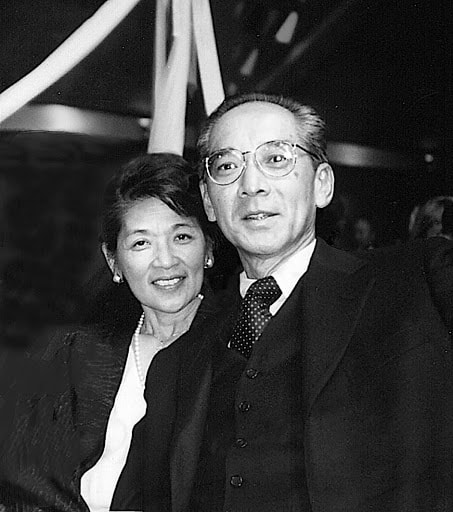
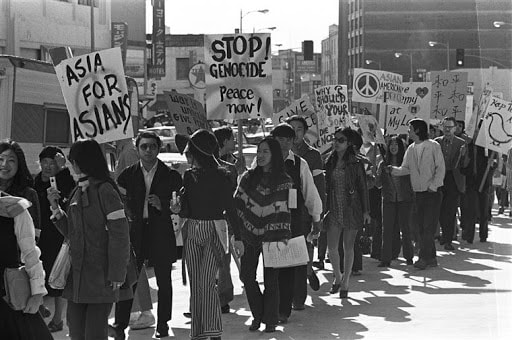
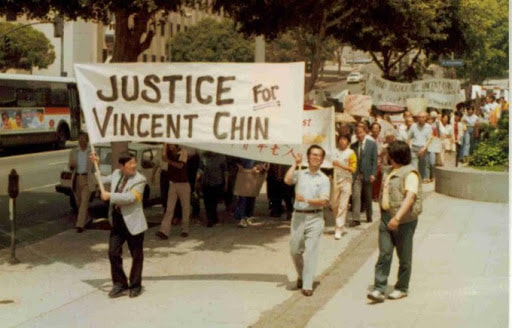
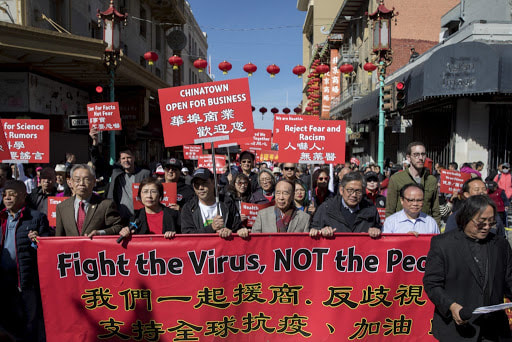

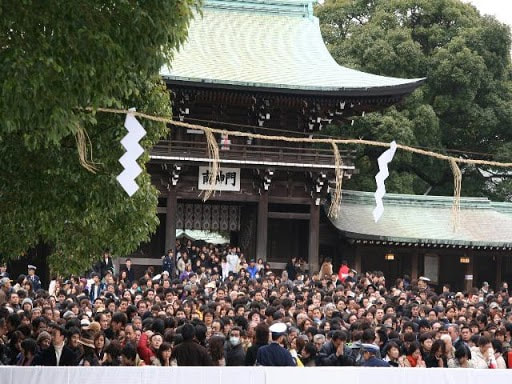

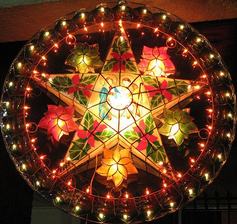

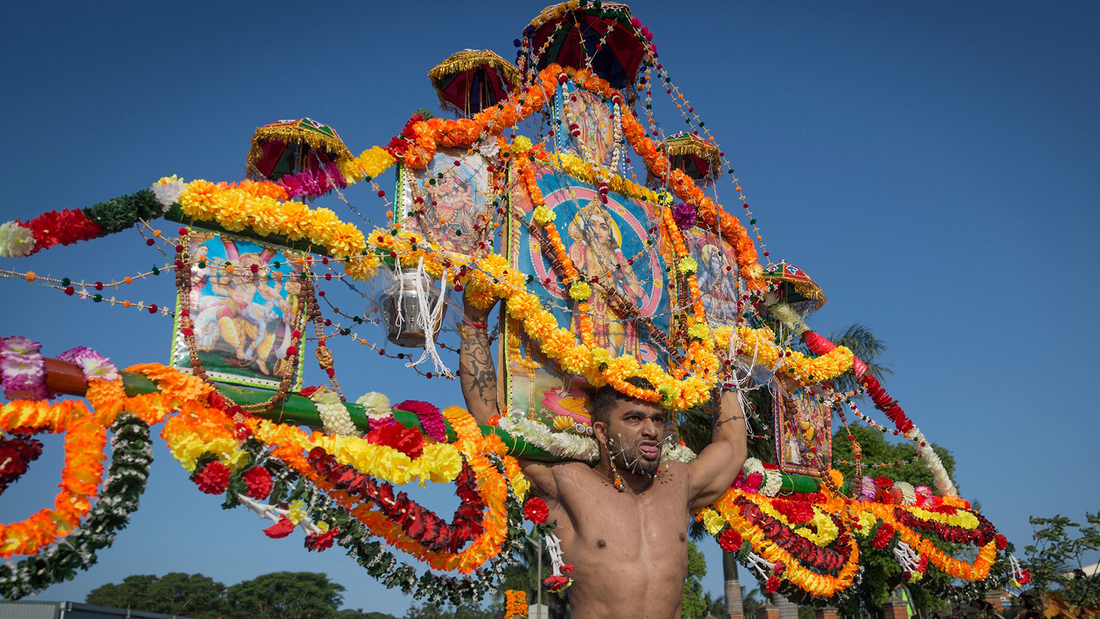
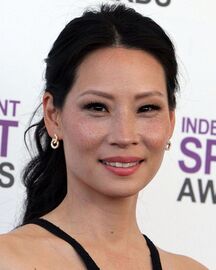
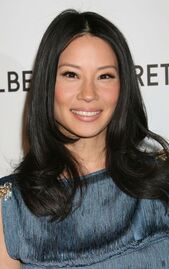

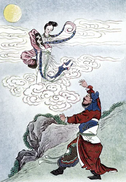

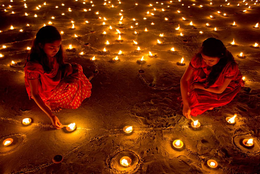
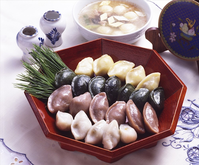
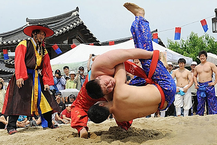
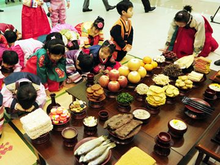
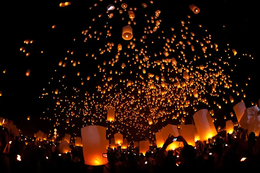
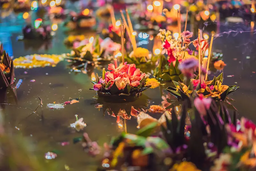
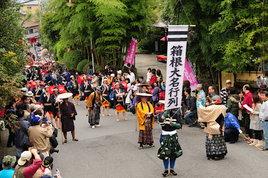
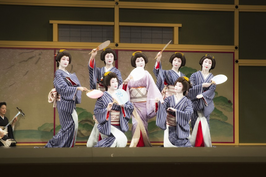
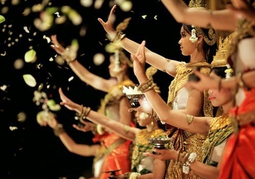
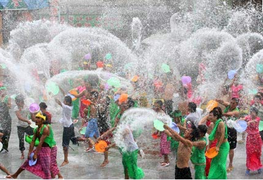
 RSS Feed
RSS Feed
